How to Run Facebook Ads: Guide for 2025
Uncovering advertising capabilities of the social media powerhouse.

We have all seen ads on Facebook and many have even run Facebook Ads campaigns. With its audience of almost 3 billion users, a wide variety of ad types, and precise targeting options, Facebook is the number one choice for digital advertising among many types of business.
In this article, we provide an overview of Facebook Ads, why Facebook advertising is so important for lead generation and brand awareness, as well as tips and best practices on running facebook ads and measuring their effectiveness.
What are Facebook Ads
Facebook Ads is a tool created by Meta Inc., which allows businesses to create targeted ad campaigns on one of the most popular social media platforms in the world.
Such campaigns can reach millions of people, selected according to their interests, behavior patterns, contact information, and demographics.
Importance of Facebook Advertising for business
In the current digital landscape, running Facebook Ads provides businesses with indispensable opportunities for engaging with target audiences, attracting new customers, and increasing brand’s visibility. As studies show, currently, there are over 2.9 billion active Facebook users globally, who spend on average about 38 minutes on the platform daily. Additionally to these astounding numbers, Facebook boasts highly precise targeting capabilities, above-average engagement rates, a wide array of ad campaign types, and integration capabilities. Let’s explore each of these aspects in more detail.
Benefits of running Facebook Ads campaigns
As Sheryl Sandberg, the former chief operating officer (COO) of Meta Platforms, said, “Social media is not just a marketing tool; it’s a way to build a community and create a tribe of loyal customers.” What makes running Facebook Ads a highly desirable way of advertising a brand is a combination of the following factors.
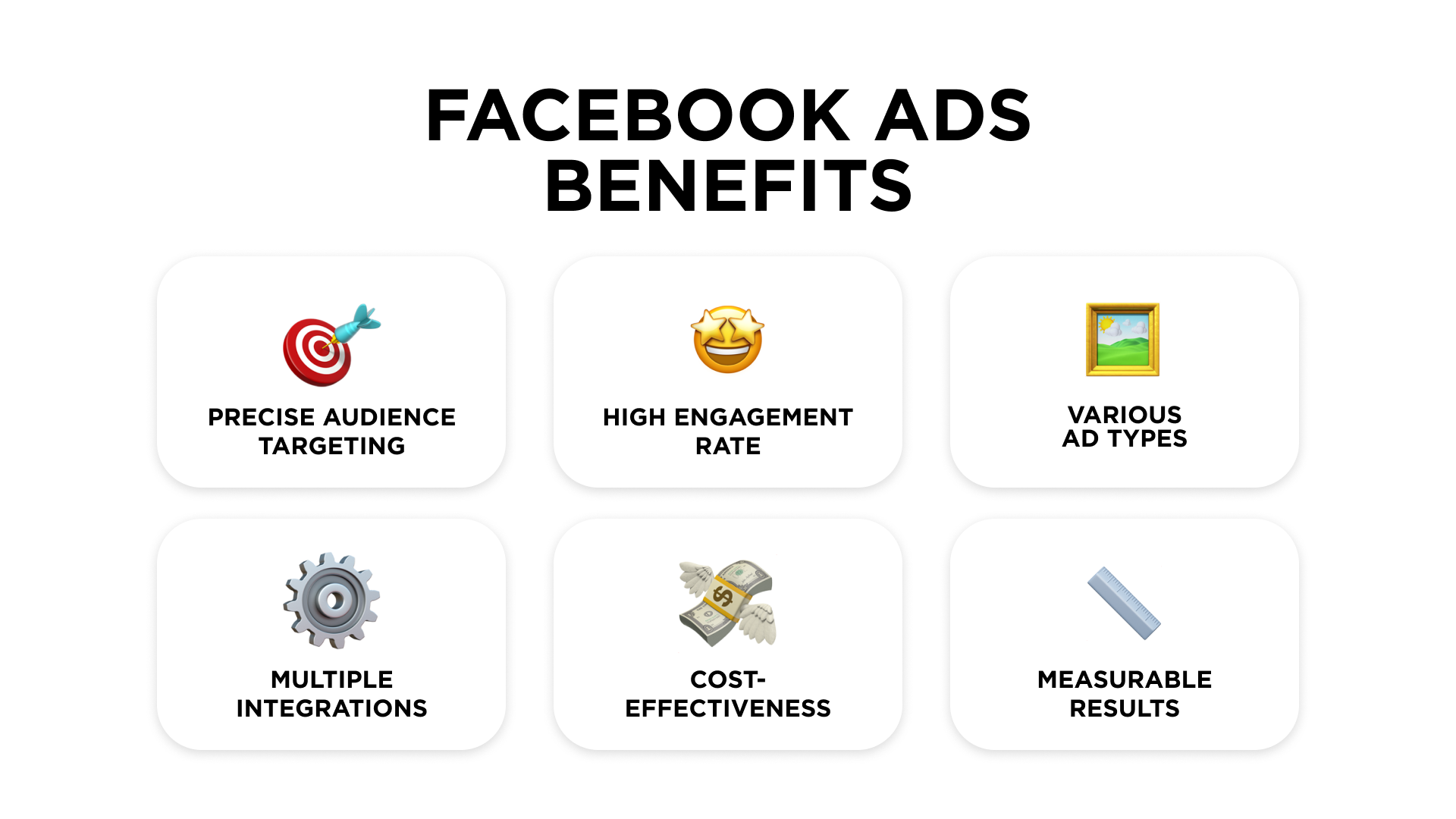
Precise audience targeting
When launching an ad campaign on Facebook, marketers can adjust who is included in the targeted audience according to multiple criteria, such as sex, age, geographic location, interests, and history of previous activities. All of these allow to increase a campaign's effectiveness while cutting down its costs.
High engagement rate
Facebook also has a high level of user engagement. Research shows that over 70% of users actively engage with ads on the platform, significantly higher than other social media platforms. This means that Facebook advertising can deliver significant results for businesses.
Various types of Facebook Ads
Facebook offers a large number of different campaign types, which allows companies to pick the most relevant ones, based on their goals and audience traits. Each ad type on Facebook serves different marketing goals and can be tailored to fit specific audience needs. Below, is a detailed overview of each type of ad that can be run on Facebook:
- Image ads consist of a single image, along with a caption and a call-to-action (CTA). They can be used to showcase products or services with high-quality visuals. It is important to ensure that the used image is high-quality, while the accompanying text is minimal and engaging.
- Video ads feature video content, which is ideal for telling short stories, demonstrating product use, or sharing brand messages. Keeping the length of 15 seconds or less is optimal, while including captions for viewers watching without sound helps to reach this audience segment as well.
- Carousel ads allow advertisers to showcase up to 10 images or videos within a single Facebook ad. Each of the images can be supplied with its own link, making this type of ad perfect for highlighting multiple products or services, and their features, or telling a story in several steps.
- Slideshow ads on Facebook combine multiple images or video clips into a looping video ad. This can be useful for advertisers with limited resources for video production; while an ad itself can be made engaging even for users with slow internet connection. It is best to use 3–10 visuals and keep the slideshow ad duration under 15 seconds.
- Collection ad is a format that allows users to browse a collection of products directly within the ad. Such an ad typically includes a cover image or video followed by product images, making it an ideal choice for e-commerce businesses and retailers that want to showcase multiple products within a single ad.
- Instant Experience ad. Formerly known as canvas ads, this is a type of full-screen mobile ads that load instantly and provide an immersive experience with a combination of images, videos, carousels, and text. They are excellent for storytelling or creating an engaging mobile experience for users.
- Lead ads provide forms that can be filled and processed by a company later. This type of ad is designed with the purpose of allowing an effective collection of details from potential customers directly within the ad without leaving Facebook. Potential use cases include lead generation for newsletters or free product trials. To maintain high competition rates, it is important to keep forms in lead ads short, asking only for essential information.
- Dynamic ads automatically show relevant products to users based on their past interactions with a company’s website or app. Useful for retargeting purposes, running Facebook Ads of this type can help bring back users who have expressed interest in specific products but did not complete a purchase.
- Event ads are the most suitable type of Facebook ads to promote an event (whether a live one, such as a concert, or a virtual one, such as a webinar) and encourage users to RSVP or learn more about it. Not only can these ads help a company boost awareness for its event but also estimate how many people are planning to attend it.
- Offer ads are used to highlight special discounts or promotions that users can redeem either online or in-store. Such an ad is a great way to drive sales during promotional periods or new product launches.
- Messenger ads appear in the Facebook Messenger app, allowing users to interact directly with a company through Messenger. Great for connecting users with customer service and sales agents, as well as sending personalized promotions.
- Stories ads are full-screen vertical ads that appear between user-generated stories on Facebook and Instagram. This type of Facebook ads gives companies an opportunity to reach users in a more informal and engaging format. However, the story format puts a limit on message duration, which makes it essential to come up with a concise idea.
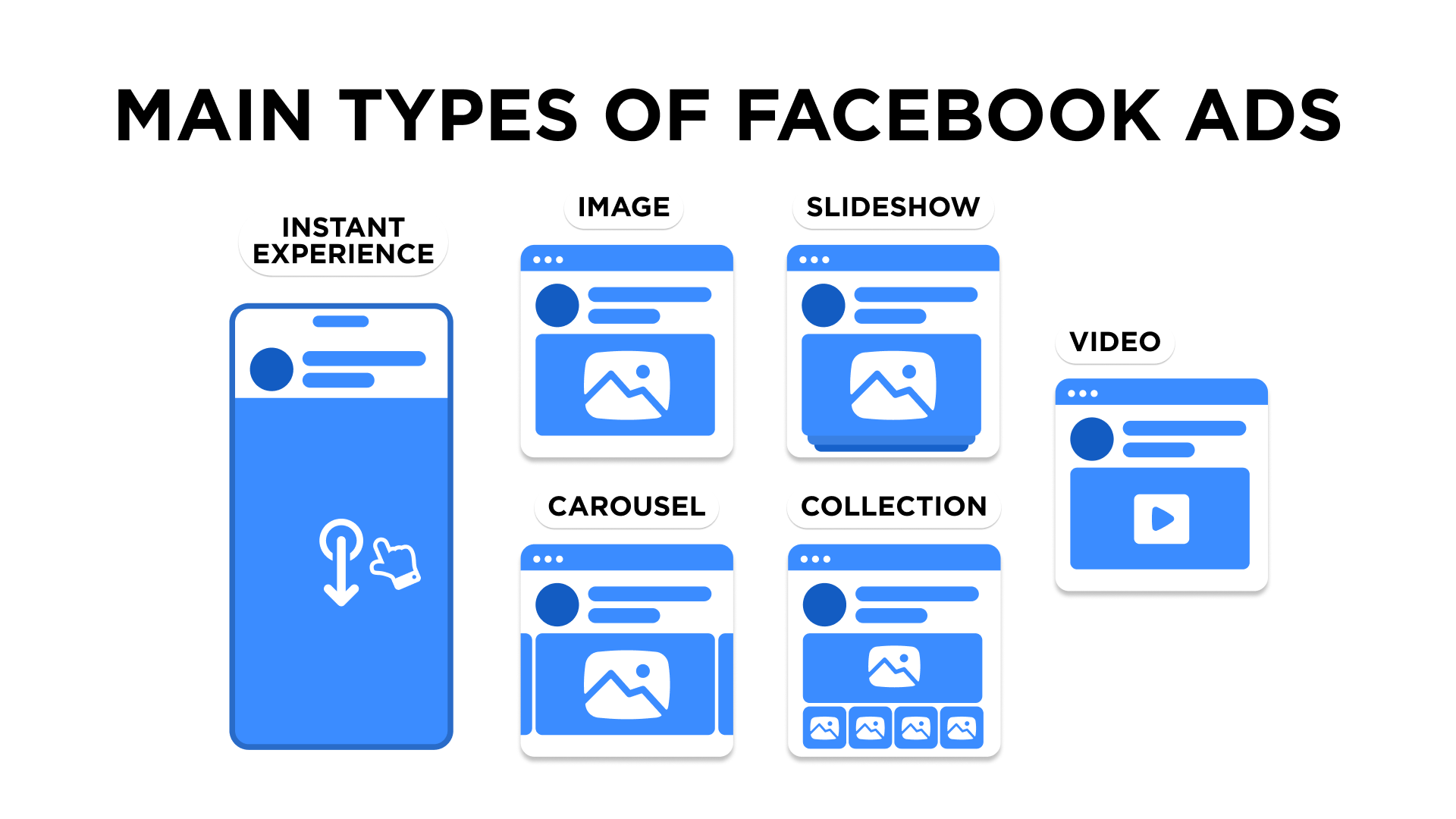
Integrations with other platforms
As a part of the Meta ecosystem, Facebook supports deep integration with Instagram, another Meta product, as well as other digital platforms. These allow companies to use Facebook Ads to effectively grow their audiences across multiple channels at once.
Cost-effectiveness
Facebook ads have comparably low budget requirements while offering a high return on investment (ROI) due to their flexible pricing structure and precise targeting. A company can set a daily or lifetime budget that aligns with its goals and control costs effectively. Additionally, Facebook's robust analytics tools set enables marketers to track ad performance in real time and optimize campaigns to enhance engagement and conversion rates even further.
Measurable results
The effectiveness of ads run on Facebook can be measured through Ads Manager, which serves as the central hub for campaign management and analytics. It provides access to detailed metrics such as impressions, clicks, click-through rates (CTR), conversions, and return on ad spend (ROAS). Meanwhile, Audience Insights provides demographic and interest-based data about the audience engaging with ads.
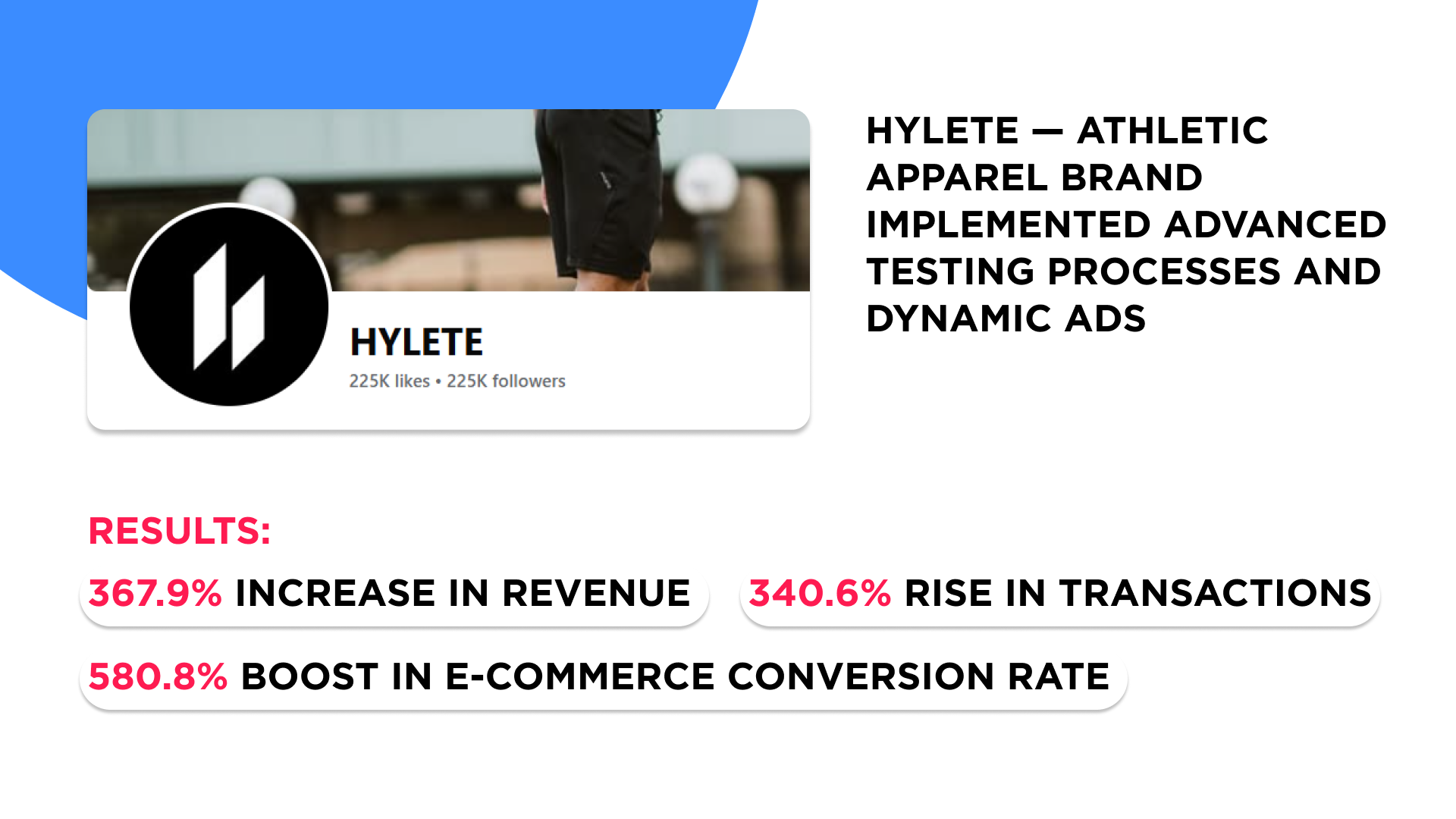
Additionally, A/B testing capabilities are useful to compare different ad variations to determine which performs best, while Facebook Pixel is a powerful tool that tracks user interactions on a website after they click on an ad, enabling companies to measure conversions and optimize campaigns based on real user behavior.
Steps to run Facebook Ads
Let’s take a look at the general steps required to run a new Facebook ad campaign.
1. Set goals
First of all, it is important to set clear goals, defining what you want to achieve with a new campaign. In most cases, it is boosting brand awareness, attracting new traffic to a website, or increasing conversion. Each of the goals requires a different approach to advertising, so it is essential to work them out beforehand.
2. Define target audience
Use built-in Facebook to assess your clients’ demographics, their interests, and preferences. The more precise is audience segmentation the better, since your ad campaigns are going to have higher conversion. Facebook ad targeting can be categorized into three main types.
- Core targeting allows advertisers to reach specific audiences based on demographics, interests, behaviors, and location, enabling precise segmentation of users who fit predefined criteria.
- Lookalike targeting makes it possible to reach new users who share similar characteristics and behaviors with their existing customers, effectively expanding their audience to those likely to be interested in their products or services. A value-based subtype of lookalike audience is an advanced feature provided by Facebook. The audience is built from an existing customer database but allows to assign a value for each customer along with the customer identifier. It can be the customers’ lifetime value, a prospect’s lead stage value, or any other value.
- Custom targeting enables marketers to upload their own customer lists or retarget website visitors and app users, allowing for highly personalized campaigns that engage users who have already interacted with the brand.
3. Choose ad type
As we saw in the previous chapter, there are a dozen types of ads available on Facebook. Each of them is more suitable for a particular case and less suitable for another one. For example, carousel ads are perfect for showcasing a line of products or several options, while story ads are suitable for creating more interactive content.
4. Create a campaign in Facebook Ads Manager
Here are the steps to perform, after accessing Ads Manager via your company’s Facebook account.
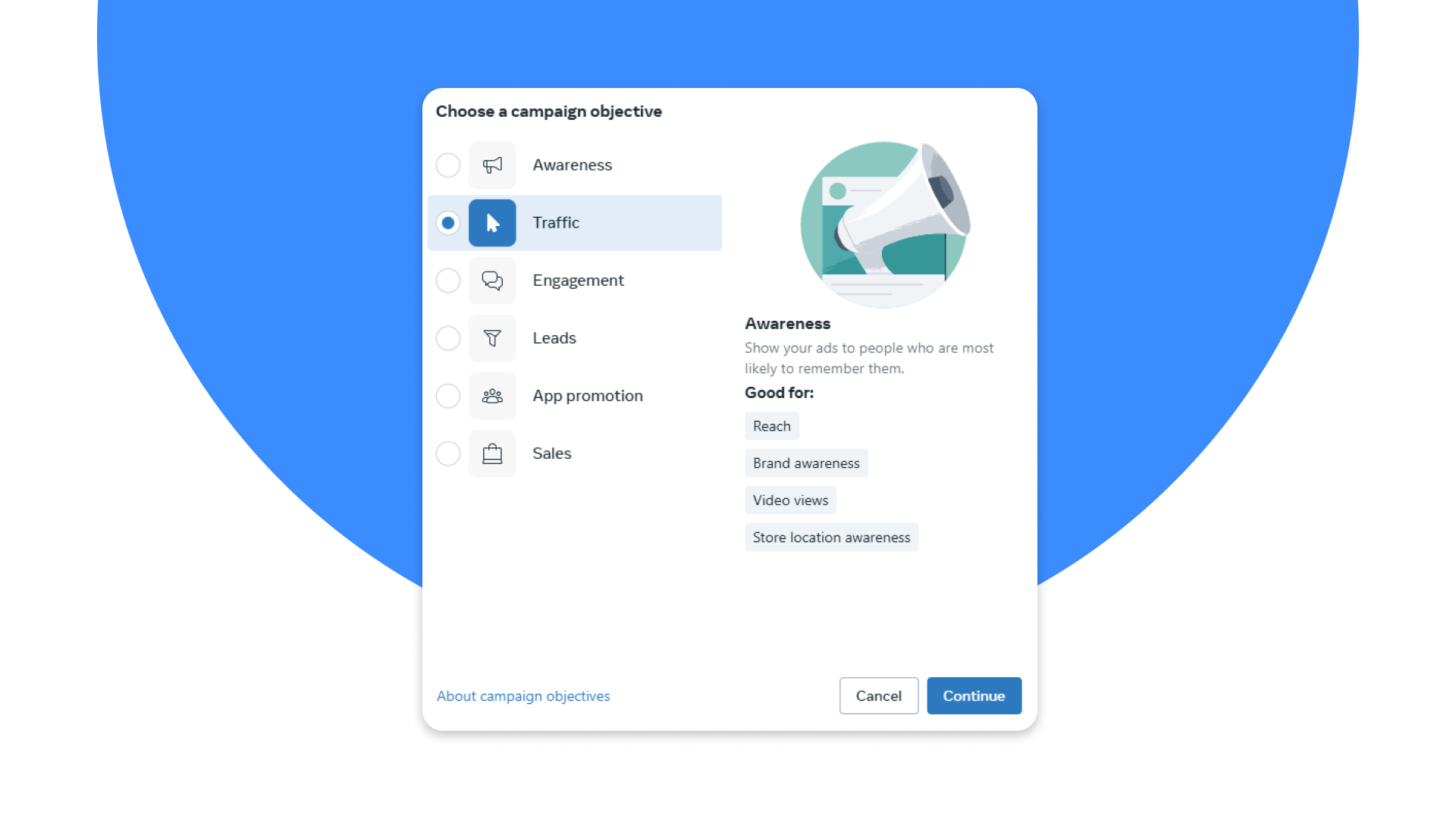
- Create a new campaign, choosing a buying type. With Auction buying, you bid for ad placements, which is cost-efficient and ideal for performance-driven campaigns with dynamic pricing based on competition. Reservation buying guarantees specific ad placements at a fixed price, making it perfect for high-profile campaigns with predictable visibility and larger budgets.
- Choose the most appropriate campaign goal from a list.
- Set up campaign parameters, such as budget, schedule, and others.
- Use audience demographics data and segmentation to set targeting parameters.
- Create ad: upload media content, images and videos, write text.
- Check all of the campaign parameters and publish it.
Budgeting and scheduling Facebook Ads
To run Facebook Ads as effectively as possible, it is essential to set a correct budget. The platform offers two main budgeting types.
- Daily budget sets a limit to how much you are willing to spend on showing an ad during 24 hours. For example, with an $11 daily budget, Facebook is going to show your ad until it reaches this figure within a day.
- Lifetime budget is an overall amount of money you are willing to spend on a campaign. This option is useful when you have a strictly allocated amount of money to run a campaign. For example, a $1500 lifetime budget means the ad is shown until the budget is spent completely.
If you are just starting with Facebook Ads, we’d advise to start with smaller budgets and test various ad types and campaign strategies without too high risks.
Tips on creating effective Facebook Ads
Several tips to make the most of your Facebook ad campaign.
Start with testing
Launch a few different ad campaigns with small budgets to identify which ads resonate best with the audience. For instance, you might run three variations of an ad featuring different images or headlines.
Analyze the results
Use Facebook's analytics tools to monitor the performance of your ads. Pay extra attention to clicks, conversion, and cost per action (CPA). For example, if one ad has a significantly lower CPA than others, it indicates that this ad is more effective at prompting uses to make a desired action.
Scale successful campaign
Once you've identified the best-performing ads, gradually increase their budget to maximize reach and conversions. This will help to capitalize on successful campaigns while minimizing risks.
Plan ads for optimal performance
Effective planning of when to show your ads plays an important role in their overall success. Identify peak times for the target audience with Facebook Insights. Scheduling your ads to run during these periods of the highest activity can significantly enhance visibility and interactions.
Leverage Facebook's delivery optimization. Depending on your ad campaign goals, you can optimize it for clicks, impressions, or conversions. This feature allows Facebook's algorithm to display the ads to users who are most likely to take the desired action, improving overall campaign efficiency.
Create engaging visuals
Use high-quality vibrant images in ads to showcase products in action or short videos that tell a compelling story about the brand.
Write compelling copy
Create concise and persuasive text that touches directly on your audience's needs and interests. Focus on the benefits that are exclusive to your product or service. For example, instead of saying "Our facial serum is great," use something like "Experience a radiant glow in just two weeks — backed by our satisfaction guarantee!". A positive tone fosters goodwill and highlights the benefits of the product or service in a way that appeals universally. Also, emphasizing availability or fast delivery, can build trust and remove final doubts of making a purchase.
Use Calls-to-Action
Incorporate strong calls-to-action (CTA) in the ads to guide users towards taking the next step. Clear CTAs like "Shop Now," "Sign Up Today," or "Learn More" can significantly improve engagement rates. For inspiration, look at high-performing Facebook Ads that effectively use CTAs to drive user action.
Don’t shy from AI generation
As tools for creating AI content get more and more sophisticated, it is a must for marketers to be familiar with them and leverage their capabilities widely. For example, Headway, an edtech startup, integrated AI tools such as Midjourney and HeyGen into their marketing efforts. The company utilized AI for various aspects of ad production, including subtitles and voiceovers, particularly in user-generated content (UGC) video ads. These UGC ads accounted for 30% to 50% of subscriptions or signups for the platform’s free trials. As a result, the return on investment for Headway's video ads grew by 40%, achieving 3.3 billion impressions in the first half of 2024.

Monitoring Facebook Ads campaigns
Even if you've just created and run a perfect Facebook campaign, it makes little sense if you’re not going to track its performance. Here is what you should know about it.
- Tracking key metrics is one of the key aspects of running a successful Facebook Ad. Among the figures to keep an eye on are Click-through-rate (CTR), Cost-per-click (CPC), and conversion rate. These metrics help to determine whether a campaign works or not and how effective it is. For example, if you are promoting a clothing shop and see that the CTR of an Image ad about seasonal sales is higher than the one about new arrivals, it is better to invest more in the former ads.
- A/B testing is a powerful and essential aspect of continuous improvement of marketing campaigns. Comparing different elements like images, CTAs, or target audiences helps to find the winning combination. For example, Seltzer Goods, a gifts & stationery company, applied this method to their Facebook ads, running two campaigns with different visuals. In just 30 days, they achieved a 785% increase in revenue, a 6.6% organic conversion rate, and a 183% rise in transactions, demonstrating how A/B testing can significantly enhance sales and conversions.
- Making data-driven adjustments to campaigns helps adjust their targeting, creatives, and budget. For example, during a campaign, you may notice that the 25–34 age group is engaging more actively with your ads. Based on this insight, it would be best to reallocate the budget toward this demographic, which is likely to lead to increased sales.
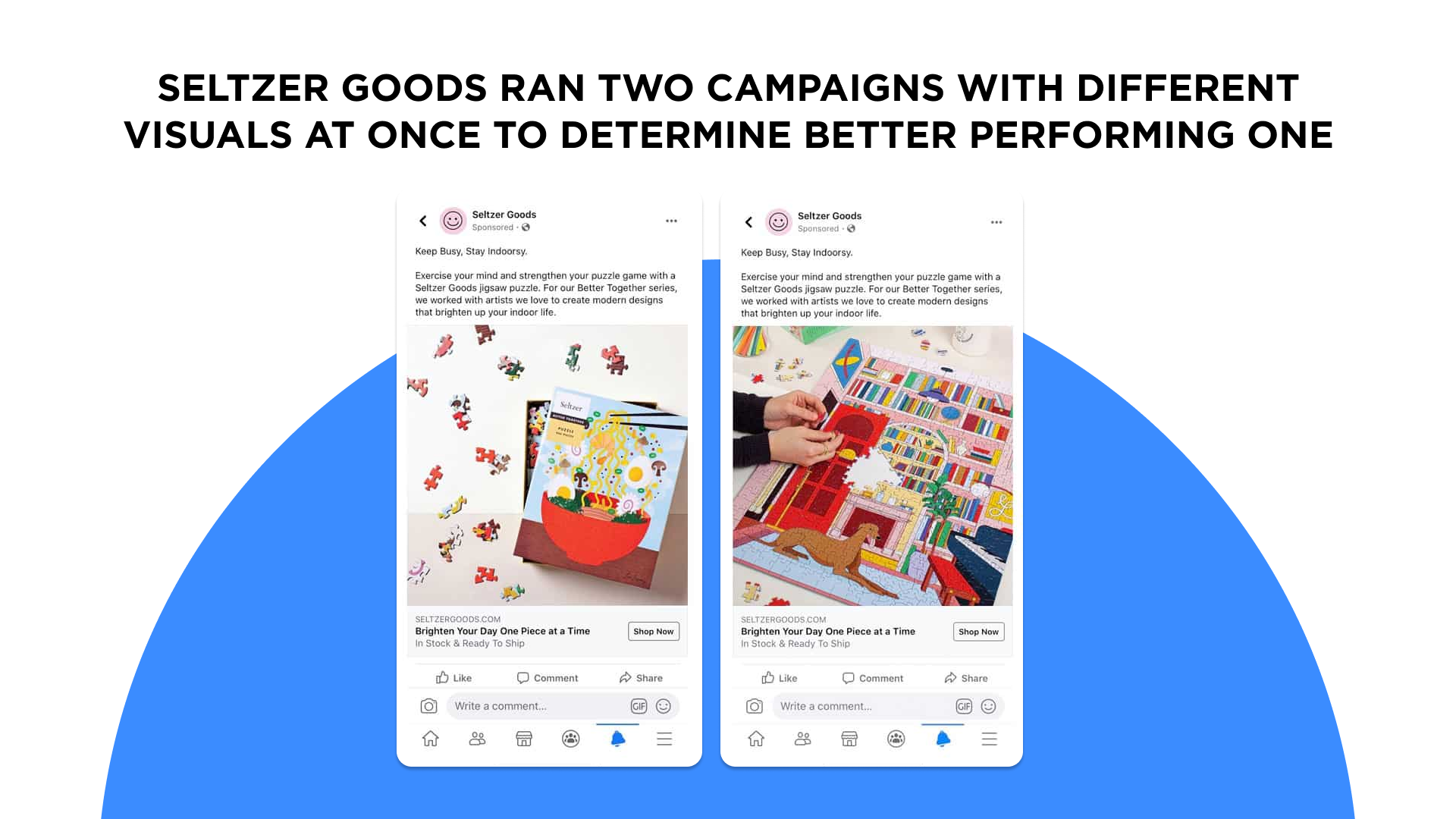
Summing things up
It can be said with 100% confidence that in the current state of the digital marketing landscape, running Facebook Ads is essential for companies looking to enhance their online presence and reach targeted audiences effectively. By implementing the best practices outlined in our blog you can effectively leverage the power of Facebook Ads to drive traffic, boost sales, and increase brand awareness. Remember, continuous learning and optimization are crucial for achieving lasting success in the ever-evolving world of Facebook advertising.
Discover new opportunities to sell and support your customers with Umnico's Facebook integration. The solution seamlessly integrates leading social media and messaging platforms such as WhatsApp, Instagram and Telegram into one easy-to-use interface. With features ranging from automated chatbots to in-depth analytics, Umnico empowers brands to tailor interactions, improve response times, and consistently enhance customer service. Take advantage of a free trial to see firsthand how the platform can strengthen your customer relationships and foster loyalty for long-term success.
You might be interested in similar topics

Subscribe to Umnico news!
Be the first to get recommendations and up-to-date information
